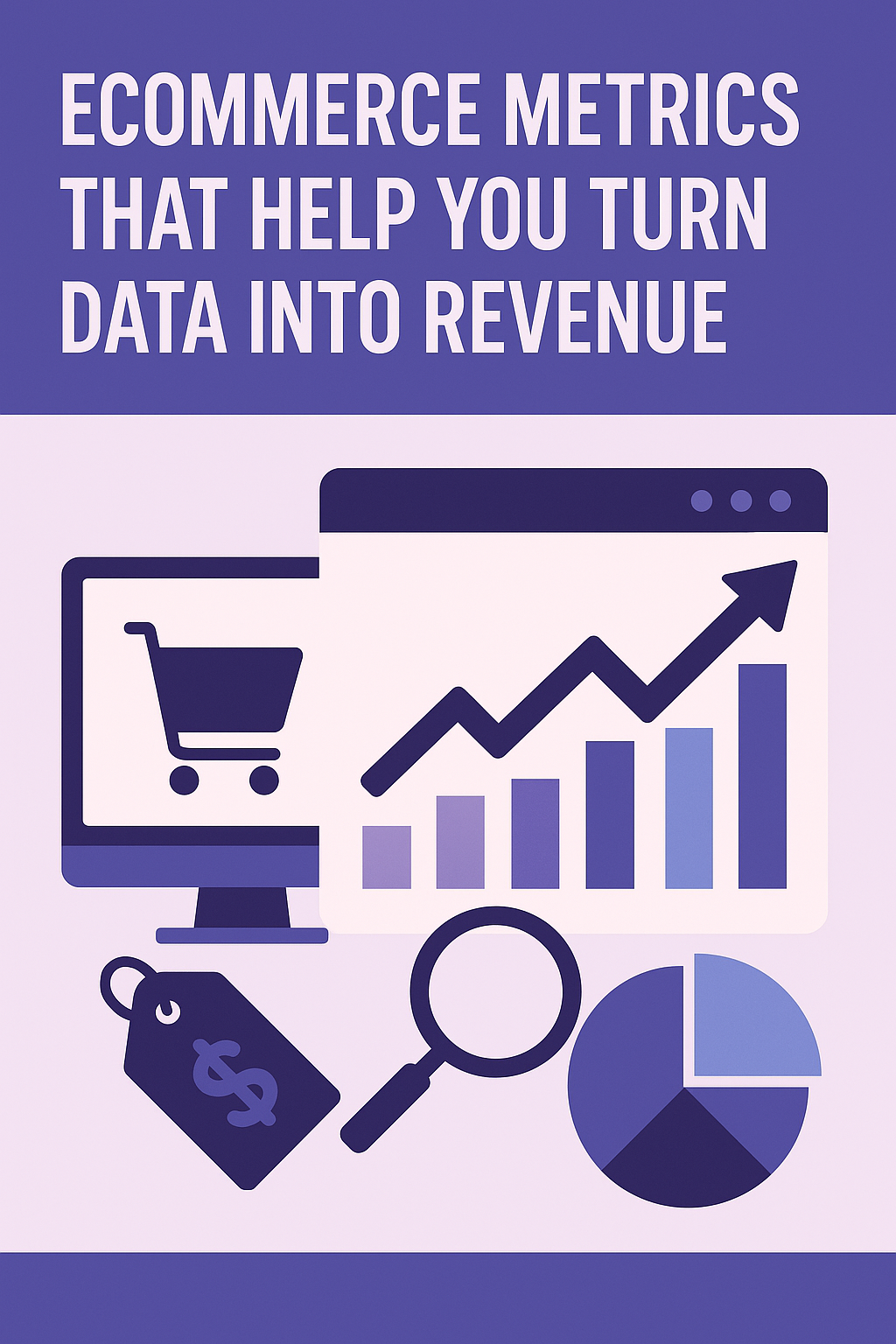In the competitive world of ecommerce, simply launching a store with a sleek online store design isn’t enough. To drive scalable growth, you need to measure what matters. That’s where ecommerce metrics come in. They are not just numbers—they are critical insights that, when used right, can lead to smarter decisions and more revenue.
Think of your data as a GPS for your ecommerce business. Without tracking the right metrics, even the best custom ecommerce solutions won’t reach their full potential. Let’s dive into the most important ecommerce metrics that bridge the gap between raw analytics and real profit.
1. Conversion Rate (CR): The Core of Ecommerce Growth
Conversion rate is the most obvious yet most underutilized ecommerce metric. It tells you how many of your visitors are actually becoming customers. If your beautifully built ecommerce website design isn’t converting, it’s not doing its job.
Formula:
Conversion Rate = (Number of Sales / Number of Visitors) x 100
Tips to Improve:
- A/B test your landing pages
- Simplify checkout process
- Use urgency and scarcity tactics
- Improve page load speed and mobile responsiveness
2. Customer Acquisition Cost (CAC): Know What You Pay to Get Customers
CAC is what it costs to acquire a new customer, including marketing, sales, and advertising expenses. High CAC with low return is a sign of inefficiency.
Formula:
CAC = Total Marketing Costs / Number of New Customers Acquired
Optimization Strategies:
- Invest in ecommerce SEO services over paid ads for long-term ROI
- Improve organic content strategy
- Retarget warm leads for lower costs
3. Average Order Value (AOV): Increase the Cart, Increase the Revenue
AOV reveals the average amount spent each time a customer places an order. It’s easier to increase the size of the cart than to acquire a new customer.
Formula:
AOV = Total Revenue / Number of Orders
Growth Hacks:
- Bundle related products
- Upsell and cross-sell with personalized recommendations
- Offer free shipping thresholds
4. Customer Lifetime Value (CLV): Think Long-Term, Not Just Per Sale
CLV measures the total amount of money a customer is expected to spend with your business over their entire relationship with you. It helps determine how much you should spend on acquisition and retention.
Formula:
CLV = AOV × Purchase Frequency × Customer Lifespan
How to Maximize CLV:
- Build loyalty programs
- Leverage email marketing automation
- Offer subscriptions and exclusive member deals
5. Shopping Cart Abandonment Rate: A Hidden Leak in the Funnel
Almost 70% of ecommerce shoppers abandon their carts. That’s a lot of lost potential revenue. This metric tells you where people are bailing out and why.
Key Fixes:
- Send automated cart recovery emails
- Offer guest checkout options
- Minimize unexpected costs like shipping or taxes
6. Return on Advertising Spend (ROAS): Are Your Ads Working?
ROAS shows how much revenue you generate from every dollar spent on advertising. It’s crucial to understand which campaigns are profitable and which aren’t.
Formula:
ROAS = Revenue from Ads / Cost of Ads
Best Practices:
- Use UTM parameters to track campaigns
- Segment audiences based on behavior
- Continuously test creative and ad placements
7. Site Traffic: Don’t Just Count Visits—Segment Them
Getting people to your store is step one, but understanding who they are, where they come from, and what they do is next-level insight.
Track:
- Traffic sources (organic, paid, referral, social)
- Device and geography
- Landing page engagement
Use these insights to optimize both ecommerce SEO services and paid strategies.
8. Bounce Rate & Exit Rate: Understand Why People Leave
Bounce rate shows single-page visits, while exit rate reveals where users are leaving your site. High bounce or exit rates from product pages? You’ve got a UX or trust issue.
Reduce Bounce Rates:
- Ensure your online store design is intuitive
- Optimize product descriptions and images
- Add trust signals like reviews and badges
9. Product Performance Metrics: What’s Hot and What’s Not
Understanding which products sell well—and which don’t—is critical for inventory, marketing, and pricing decisions.
Metrics to Watch:
- Product views vs. purchases
- Add-to-cart rate
- Revenue per product
Apply this data to upsell tactics and feature high-performing products on homepage or ad creatives.
10. Email Marketing KPIs: Your Revenue-Generating Engine
Email marketing isn’t dead—it’s thriving when done right. Track metrics like open rates, CTR, and revenue per email to refine campaigns.
Metrics to Improve:
- Open Rate
- Click-Through Rate (CTR)
- Unsubscribe Rate
- Revenue Per Email
Personalization is key. Use customer behavior and segment your list accordingly.
11. Customer Retention Rate: Growth Isn’t Just Acquisition
Repeat customers are more profitable. Tracking retention gives insight into customer satisfaction and loyalty.
Formula:
CRR = ((E-N)/S) x 100
Where:
E = Customers at end
N = New customers
S = Customers at start
Boost Retention:
- Deliver outstanding customer support
- Create value-added content
- Offer reorder reminders and incentives
12. Net Promoter Score (NPS): Would They Recommend You?
This particular survey asks customers how likely they are to recommend your store. It’s a strong indicator of customer experience and brand loyalty.
How to Use NPS:
- Act on negative feedback
- Reward promoters with referrals or loyalty perks
- Monitor trends over time
13. Site Speed & Mobile Responsiveness: Underrated but Crucial
A slow site means lost sales. Google also factors in site speed for rankings, impacting your ecommerce SEO services.
Tools:
- Google PageSpeed Insights
- GTmetrix
- Mobile-Friendly Test
Compress images, use caching, and choose fast hosting for best results.
14. Checkout Funnel Metrics: Find and Fix Drop-Offs
Use Google Analytics or heatmaps to see where users drop off in your checkout process. Streamlining these steps increases your overall conversion rate.
Focus Areas:
- Number of steps in the funnel
- Form field optimization
- Payment and shipping clarity
15. On-Site Search Metrics: Uncover What Shoppers Really Want
Track what users are searching for and whether they find it. This helps in optimizing custom ecommerce solutions like product categorization and inventory.
Track:
- Top searches
- Searches with no results
- Search-to-purchase ratio
Use this data to create new collections, improve navigation, or launch new products.
Conclusion
Data without action is just noise. By monitoring the right ecommerce metrics, you can steer your store toward higher conversions, lower acquisition costs, and more loyal customers. Whether you’re refining your ecommerce website design, investing in smarter ecommerce SEO services, or developing custom ecommerce solutions, metrics are the fuel for revenue growth.





